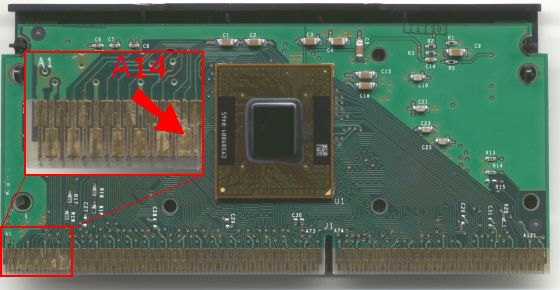Performance Guide: Intel Pentium III
Which Is The Best Coppermine For Overclockers?
First of all I want to make clear that this kind of advice is meant for users who really know what they are doing: Overclockers and performance freaks. Our recommendations are based on experiences which we collected during endless tests and benchmark runs. I think you will understand that we neither can guarantee that the suggested clock settings will always work, nor do we take any responsibility for data losses, damaged hardware or other problems you may face. Overclocking is always an adventure, which is why some guys just do it without even needing the higher performance.
Taking a look at the table on the last page makes the decision quite easy. Most Coppermines should be able to do about 700 MHz without difficulties. If you're out for big performance at a little price, go for the Pentium III models running 133 MHz and medium clock speeds: 533, 600 and 667 MHz. Clocking them at 150 MHz should always be possible, as the core speed does not rise that much. The effect of the higher bus speed is much better performance, particularly for games or graphic applications. Check the benchmarks later on in this article.
How To Force Any 100 MHz CPU To Run At 133 MHz
Do you still remember the 'B21' trick ? Two years ago, Tom revealed that running a 66 MHz Slot-1 CPU at 100 MHz FSB is no problem: All you have to do is to cover pin B21. This way you had the motherboard believe that a 100 MHz was present.
Obviously there is a very similar trick to get every 100 MHz CPU running at 133 MHz, even if the motherboard does detect the FSB speed automatically. The pin is called 'A14' this time. Please take a look at the following picture:
I took some transparent tape, which was not the best decision just because you cannot see it on this photo any more. It doesn't matter which material you're going to use, as long as it's isolating and prevents A14 to get contact to the slot. Make sure that you only cover A14, nothing more, nothing less.
Please remember that it doesn't make sense covering A14 on CPUs which do already run at 650 MHz or more (100 MHz FSB), as the resulting clock speed would be too high: Most Coppermine cores acutally can't do much more than 800 MHz. Please take a look at the table in the beginning of this article for the complete clock speed listing.
Get Tom's Hardware's best news and in-depth reviews, straight to your inbox.
Current page: Which Is The Best Coppermine For Overclockers?
Prev Page 150 MHz FSB Next Page Test Setup
Patrick Schmid was the editor-in-chief for Tom's Hardware from 2005 to 2006. He wrote numerous articles on a wide range of hardware topics, including storage, CPUs, and system builds.
